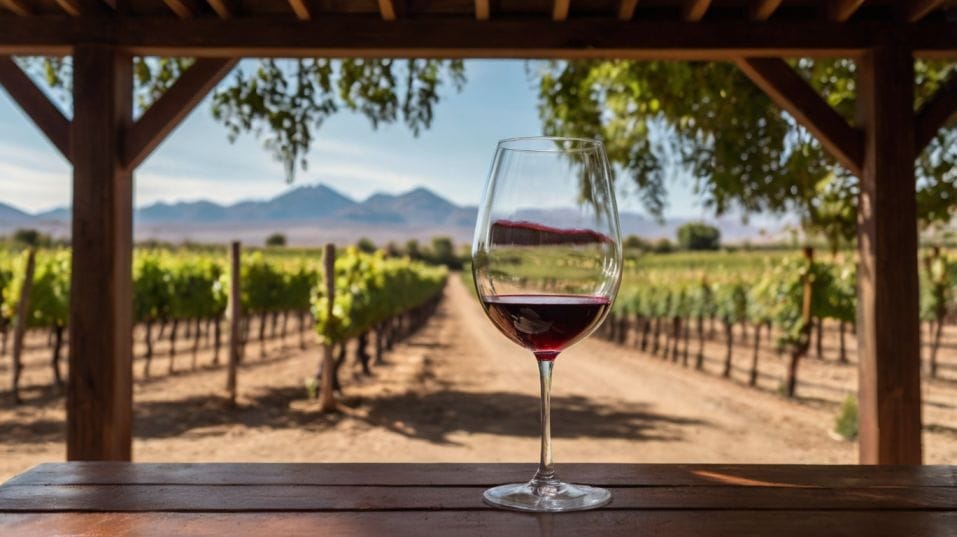Why Malbec from Argentina Feels Bold and Smooth
Discover why Argentinian Malbec is bold yet smooth. Learn how to taste, choose, and pair this wine with confidence—even as a beginner.

What makes a wine feel bold yet silky, rich but never overdone? Malbec from Argentina holds the answer. It’s not flashy or trendy—it’s foundational.
For anyone starting their wine journey, Malbec offers clarity. You’ll learn how structure feels, how balance tastes, and why texture matters.
It doesn’t shout, but it speaks confidently. The more you explore it, the more you understand not just wine—but your own palate.
What You're Actually Tasting
When people call Malbec "bold," they’re often referring to the immediate sensory impact: deep color, dense fruit, and a fullness that spreads across your palate.
But what creates that impact starts long before the bottle’s opened. It begins in the vineyard. Most quality Malbec in Argentina comes from Mendoza, particularly subregions like Luján de Cuyo and the Uco Valley.
These areas sit at high altitudes—anywhere from 2,800 to over 5,000 feet above sea level. That elevation changes everything. The sun is more intense, which helps grapes develop thick skins (a major source of color and tannin).
But at night, temperatures drop dramatically. That cool-down preserves acidity and slows down ripening, which lets the grape develop complexity instead of just sugar.
This tension—warm days, cool nights—translates directly into the glass. You taste it in the wine’s balance.
Malbec gives you saturated flavors like blackberry, plum, and black cherry, but those flavors are shaped by brightness and freshness. It’s not jammy. It’s full, but focused.

Why It Feels Smooth—Not Soft
Tannins are a big part of why red wine feels structured. They come from grape skins, seeds, and any oak the wine might touch during aging.
Some grapes (like Cabernet Sauvignon) produce assertive, sometimes aggressive tannins that need years to relax. Malbec is different.
The tannins in Argentinian Malbec tend to be round, ripe, and well-integrated, even when the wine is young. That’s partly due to the grape’s natural makeup—but also because of how it’s grown and handled.
High-altitude grapes often achieve phenolic ripeness (a state where tannins taste smooth, not astringent) without excess sugar. That lets winemakers create wines with presence and texture without going overboard on alcohol or oak.
This is where the smoothness comes in. You’ll feel richness, but not roughness. Power, but no punch. It’s the kind of structure that feels like tailored clothing—not tight, not loose, just intentional.
If you’re just beginning to understand the tactile side of wine—the way a wine feels in your mouth, not just how it tastes—Malbec is an ideal place to start. It teaches you to notice texture as much as flavor.
The Layers Beneath the Fruit
Yes, fruit leads. That’s part of what makes Malbec appealing to newer wine drinkers: it shows expressive aromas and juicy flavors without much coaxing. But a good bottle won’t stop there.
With a few swirls and a little air, Malbec often reveals notes like violet, cocoa, black pepper, dried herbs, or earthy minerality.
These subtler qualities come from a mix of factors: older vines, well-managed vineyards, and thoughtful winemaking—especially when oak aging is used not to flavor the wine, but to give it shape.
Some winemakers lean into a more polished, international style with toasty oak and denser extraction. Others aim for purity and transparency, letting the vineyard speak with minimal interference.
Both approaches have value—but as your palate grows, you’ll likely start to prefer wines that feel more composed than manipulated.
How to Choose Malbec Like You Mean It
You don’t need to memorize a dozen subregions to choose wisely, but paying attention to origin helps. Wines labeled from the Uco Valley tend to show more lift and aromatic freshness.
Luján de Cuyo, one of Argentina’s most historic wine zones, often produces plush, structured Malbec with a sense of generosity and finesse.
Look for producers that mention specific vineyard sites or elevation levels—that’s usually a sign of quality-focused winemaking. You’re not looking for exclusivity.
You’re looking for clarity: wines that show the grape, the place, and the choices behind them. Skip the bottom shelf, but you don’t have to overspend. In the $15–25 range, you’ll find plenty of bottles that deliver real nuance.
Taste a few side by side if you can. Compare one with heavier oak to one that leans fresher. Note how the finish behaves—does it stay with you or drop off fast? These small observations build your palate more than memorizing tasting notes ever will.
Bringing Malbec to the Table
Malbec has earned its “steak wine” reputation for a reason—it pairs naturally with grilled meats, especially cuts with some char or fat. But its usefulness goes way beyond that.
Its weight and tannin make it a natural partner for umami-rich dishes: roasted mushrooms, lentils with smoked paprika, eggplant with miso, even dark chocolate with sea salt.
What matters most is balance. You’re not matching flavors directly—you’re matching intensity and texture.
That’s another lesson Malbec teaches: food and wine pairing isn’t about exact ingredients. It’s about feel. Rich food meets a rich wine.
Something grilled meets something bold. And when both feel composed, the pairing works—whether it’s steak or something entirely unexpected.
Final Thoughts
Argentinian Malbec earns its reputation not through trend, but through taste. It’s a wine that shows power without harshness, richness without sweetness, and smoothness without simplicity.
For anyone looking to understand red wine on a deeper level, Malbec is more than accessible—it’s instructive. So give it real attention. Pour a glass. Taste it slowly. Let it open, let it shift, and start noticing what it teaches you.
Every sip helps you build your sense of structure, balance, and what you like. That’s the goal—confidence, not just knowledge.
Try something from a higher elevation site next time. Taste a bottle that skips oak. Match it with something unexpected on your dinner table. Let Malbec be more than a gateway. Let it be a guide.




